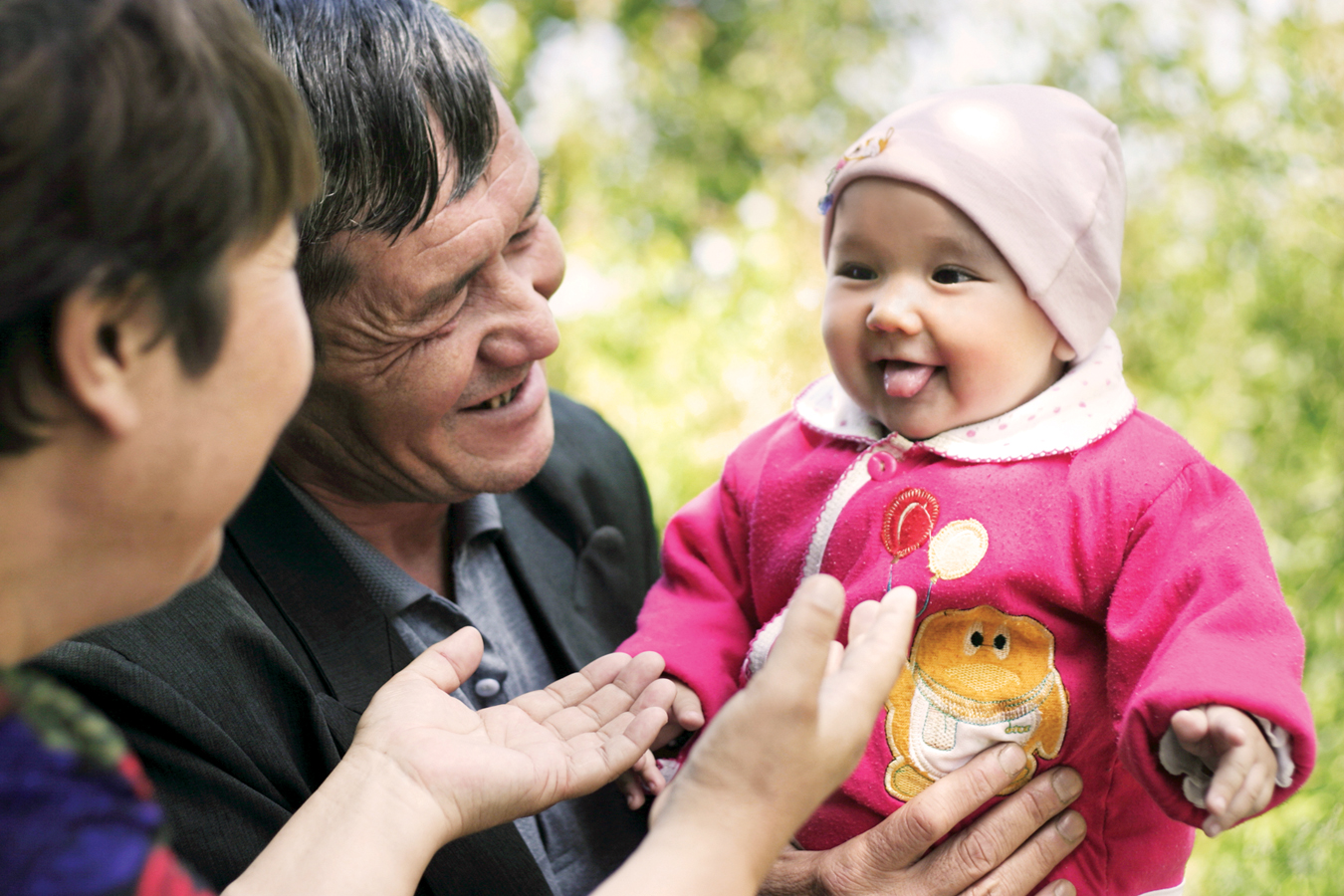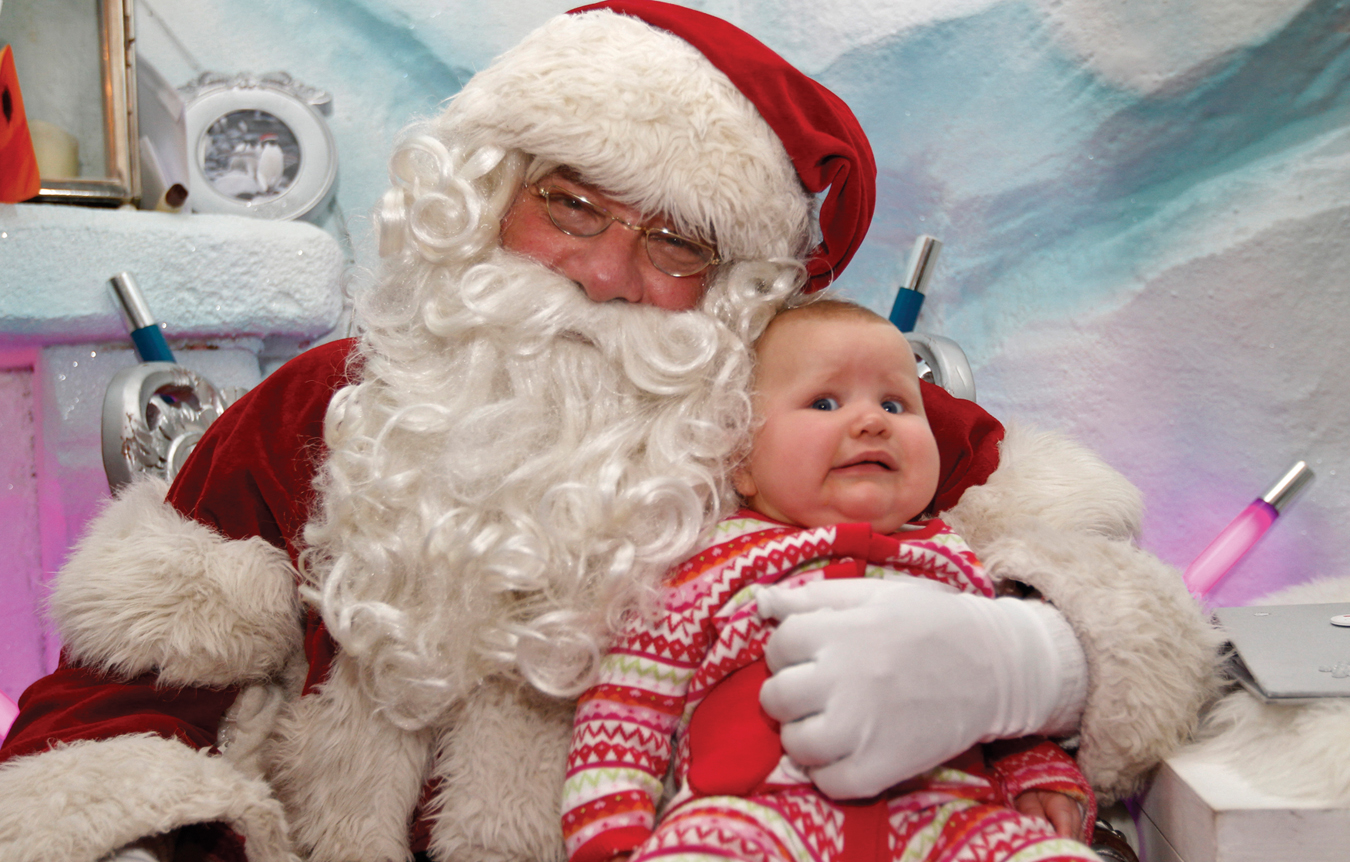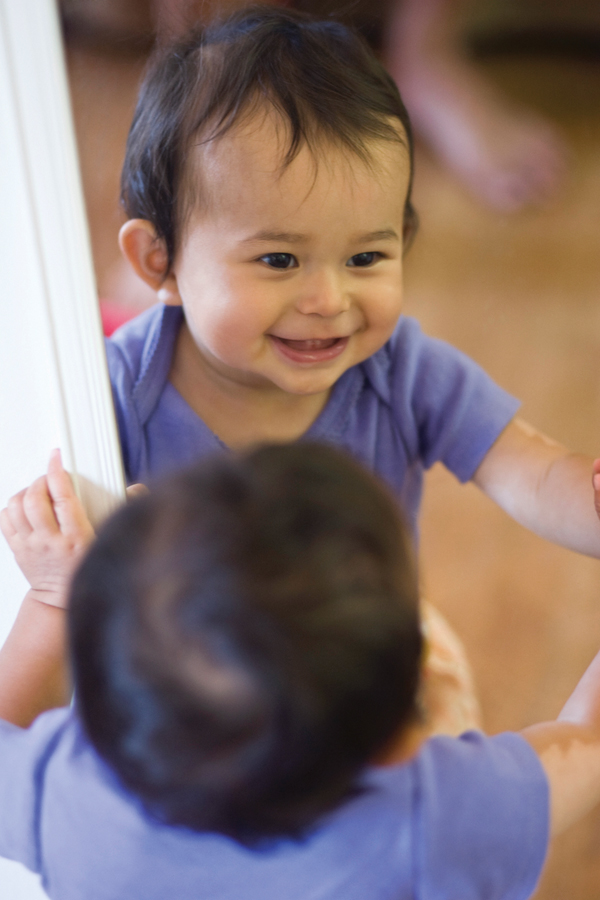 Emotional Development
Emotional Development
In their first two years, infants progress from reactive pain and pleasure to complex patterns of social awareness (see At About This Time) (Lewis, 2010). This is a period of “high emotional responsiveness” (Izard et al., 2002, p. 767), expressed in speedy, uncensored reactions—
| Developing Emotions | ||
|---|---|---|
| Birth | Distress; contentment | |
| 6 weeks | Social smile | |
| 3 months | Laughter; curiosity | |
| 4 months | Full, responsive smiles | |
|
4- |
Anger | |
|
9- |
Fear of social events (strangers, separation from caregiver) | |
| 12 months | Fear of unexpected sights and sounds | |
| 18 months | Self- |
|
| As always, culture and experience influence the norms of development. This is especially true for emotional development after the first eight months. | ||
Early Emotions
At first there is pleasure and pain. Newborns are happy and relaxed when fed and drifting off to sleep. They cry when they are hurt or hungry, tired or frightened (as by a loud noise or a sudden loss of support). Some infants have bouts of uncontrollable crying, called colic—probably the result of immature digestion. About 20 percent of babies cry “excessively,” defined as more than three hours a day, for more than three days a week, for more than three weeks (J. S. Kim, 2011).
Smiling and Laughing
social smile A smile evoked by a human face, normally first evident in infants about 6 weeks after birth.
Soon, additional emotions become recognizable (Lavelli & Fogel, 2005). Curiosity is evident as infants (and people of all ages) respond to objects and experiences that are new but not too novel. Happiness is expressed by the social smile, evoked by a human face at about 6 weeks. Preterm babies smile a few weeks later because the social smile is affected by age since conception.

Infants worldwide express social joy, even laughter, between 2 and 4 months (Konner, 2007; Lewis, 2011). Laughter builds as curiosity does; a typical 6-
Anger and Sadness
The positive emotions of joy and contentment are soon joined by negative emotions, which are expressed more often in infancy than later on (Izard, 2009). Anger is evident at 6 months, usually triggered by frustration, such as when infants are prevented from moving or grabbing. It is usually easy to see when an infant is angry.
To learn how infants responded to frustration, researchers “crouched behind the child and gently restrained his or her arms for 2 minutes or until 20 seconds of hard crying ensued” (Mills-
cortisol The primary stress hormone; fluctuations in the body’s cortisol level affect human emotion.
In infancy, anger is a healthy response to frustration, unlike sadness, which also appears in the first months. Sadness indicates withdrawal and is accompanied by an increase in the body’s production of cortisol, the primary stress hormone.
This conclusion comes from experiments in which 4-
Since sadness produces physiological stress (measured by cortisol levels), sorrow negatively impacts the infant. All social emotions, particularly sadness and fear, probably shape the brain (Fries & Pollak, 2007; M. H. Johnson, 2011). As you learned in Chapter 5, experience matters. Too much sadness early in life correlates with depression in later years.
Fear
Fear in response to some person, thing, or situation (not just being startled in surprise) is evident at about 9 months and soon becomes more frequent and obvious (Witherington et al., 2004). Two kinds of social fear are typical:
- Separation anxiety—clinging and crying when a familiar caregiver is about to leave
separation anxiety An infant’s distress when a familiar caregiver leaves; most obvious between 9 and 14 months.
- Stranger wariness—fear of unfamiliar people, especially when they move too close, too quickly
stranger wariness An infant’s expression of concern—
a quiet stare while clinging to a familiar person, or a look of fear— when a stranger appears.
Separation anxiety is normal at age 1, intensifies by age 2, and usually subsides after that. Fear of separation interferes with infant sleep. For example, infants who fall asleep next to familiar people may wake up terrified if they are alone (Sadeh et al., 2010). Some babies become accustomed to a “transitional object,” such as a teddy bear or blanket that comforts them as they transition from sleeping in their parents’ arms to sleeping alone.
Transitional objects are not pathological; they are the infant’s way of coping with anxiety. However, if separation anxiety remains strong after age 3 and impairs the child’s ability to leave home, go to school, or play with friends, it is considered an emotional disorder. Separation anxiety as a disorder can be diagnosed up to age 18 (DSM-
Strangers—
Many 1-
Every aspect of early emotional development interacts with cultural beliefs, expressed in parental actions. There seems to be more separation anxiety and stranger wariness in Japan than in Germany because Japanese infants “have very few experiences with separation from the mother,” whereas in German towns, “infants are frequently left alone outside of stores or supermarkets” while their mothers shop (Saarni et al., 2006, p. 237).
Especially for Nurses and Pediatricians Parents come to you concerned that their 1-
Response for Nurses and Pediatricians: Stranger wariness is normal up to about 14 months. This baby’s behavior actually might indicate secure attachment!

Toddlers’ Emotions
Emotions take on new strength during toddlerhood (Izard, 2009). For example, throughout the second year and beyond, anger and fear become less frequent but more focused, targeted toward infuriating or terrifying experiences. Similarly, laughing and crying are louder and more discriminating.
The new strength of emotions is apparent in temper tantrums. Toddlers are famous for fury. When something angers them they might yell, scream, cry, hit, and throw themselves on the floor. Logic is beyond them; if adults respond with anger or teasing, that makes it worse. Soon sadness comes to the fore, and then comfort (not acquiescence or punishment) is helpful (Green et al., 2011).
Social Awareness
Temper can be seen as an expression of selfhood. So can new toddler emotions: pride, shame, embarrassment, disgust, and guilt (Stevenson et al., 2010; Thompson, 2006). These emotions require social awareness, which emerges from family interactions, shaped by the culture (Mesquita & Leu, 2007).
For example, many North American parents encourage toddler pride (saying, “You did it yourself”—even when that is untrue), but Asian families typically discourage pride. Instead, they cultivate modesty and shame (Rogoff, 2003). Such differences may still be apparent in adult personality and judgment, as some criticize people who brag but others criticize those who are too self-
Disgust is also strongly influenced by other people and age. According to a study that involved many children of various ages, many 18-
Self-Awareness
self-
In addition to social awareness, another foundation for emotional growth is self-

Very young infants have no sense of self—
self-
[Thompson, 2006, p. 79]
In a classic experiment (Lewis & Brooks, 1978), 9-
However, between 15 and 24 months, babies became self-
SUMMING UP
A newborn’s emotions are distress and contentment, expressed by crying or looking relaxed. The social smile is evident at about 6 weeks. Soon curiosity, laughter, anger (when infants are kept from something they want), and fear (when something unexpected occurs) appear, becoming evident in the latter half of the first year. Toddlers become aware of themselves, and that allows them to experience and express many emotions that indicate awareness of themselves and other people’s reactions to them. Throughout infancy, cultural expectations and parental actions shape emotions.